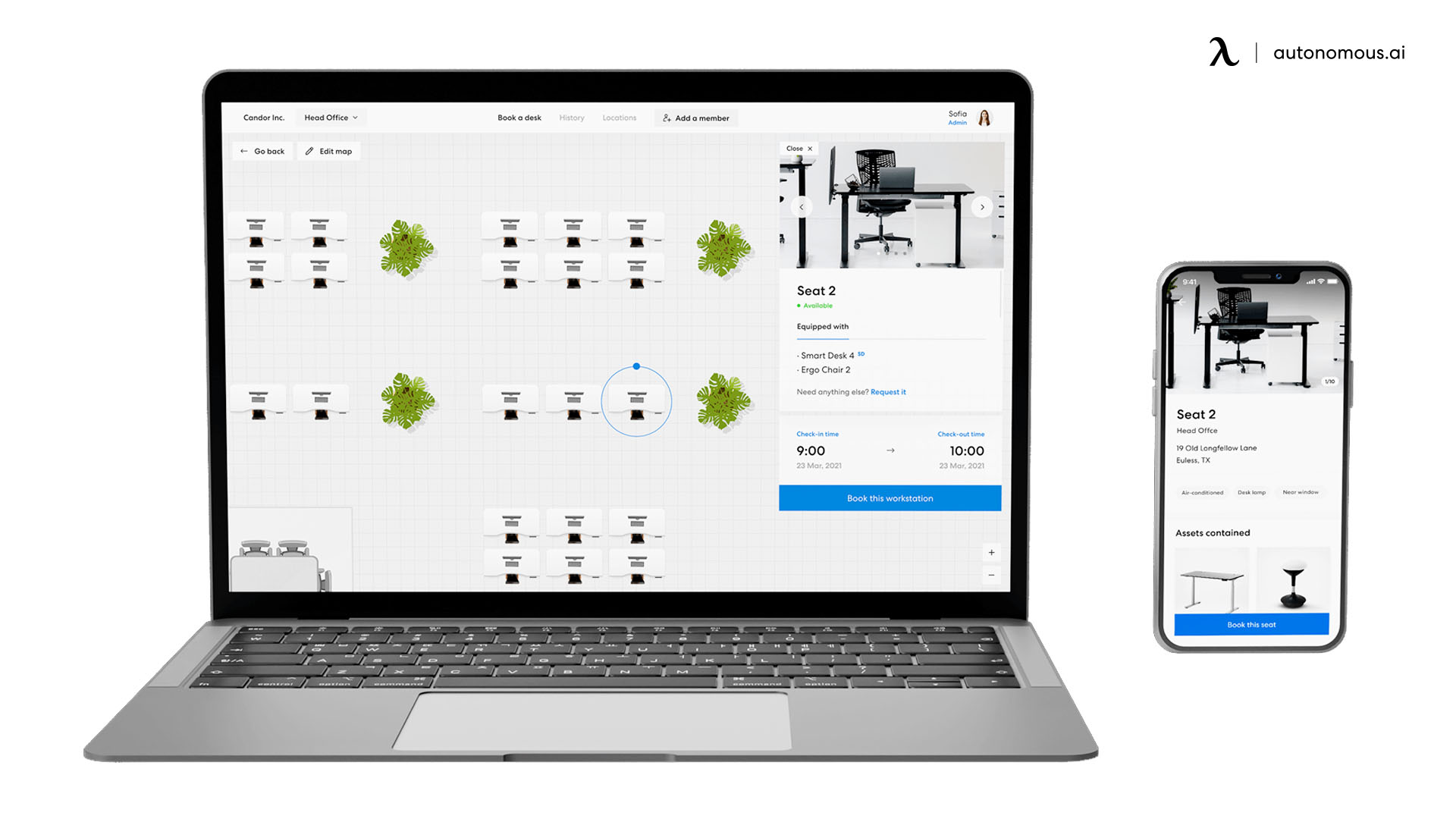
5 Hybrid Office Models with Best Practices for Business
Company managers and leaders are figureheads expected to provide direction for the organization. The management team forms work model policies for adoption by the rest of the company. Managers must spearhead the formulation of a hybrid office model.
There are several remote and hybrid work models. It is crucial to be clear on what you are talking about. Of the many work models, some stand out for their efficiency. Below are five primarily used hybrid and remote work models adopted by leaders.
5 Popular Hybrid Office Model for Business
1. Office-Centric Hybrid

This working model requires employees to report to work at the office. It has a hybrid work from home modification that allows employees to work from any location for around one or two days every week.
Companies believe that office-centric hybrid models give employees the freedom to be creative. Such workers become more effective in developing connections. They also develop good coordination skills with their team members. The result is a developed feeling of a sense of belonging.
It is good to remember that this model does not stop employee flexibility. Any person can still deliver the expected results on days they are remotely working.
2. Fully Flexible Hybrid
This is a hybrid work model giving employees the liberty to choose when and where to work from. Workers have the power of deciding when to come to the office and when to work from any location.
A major challenge to this hybrid workplace model is that it can have devastating impacts. Employee status tiers may emerge leading to significant workplace inequalities. Office-bound workers may receive favors more often.
It becomes challenging for managers to meet real work coordination. This is because it is hard to tell who is likely to report to the office.
There is a need for deliberate effort to ensure the model does not become an impossibility. Effective execution requires the adoption of significant deliberate organizational design. Without this design, the model can fail miserably and fast.
3. Remote-Friendly (Remote-ish) Hybrid

This is a hybrid remote work placing guardrails on who works remotely. Employees may have to schedule the days they work from home. The plan has defined days that they must report to the office every week.
The remote-ish hybrid office model may also involve a sizable number of employees working remotely full time. Most workers may have to report to the office most days of the week while doing hybrid remote work.
This hybrid remote work approach is lucrative for hiring personnel. It simplifies work by engaging nonlocal talents to work away from the office. Its most significant flaw is the potential rise of inequities. Office-going employees access crucial information quicker. The same workers have unlimited executive facetime, promotion opportunities, and rewards.
4. Hybrid Remote-Office
Hybrid Remote-Office is a hybrid business model that gives employees an options menu. They can choose the days they work from a home office and in-office.
This day choosing a model allows more predictability. It is becoming more attractive to companies, especially during the COVID-19 pandemic. The hybrid work model is attractive to recruiters, too.
It has its shortcomings in the quick emergence of inequalities. Managers may immensely opt for in-office working.
5. Virtual (Remote-First) Hybrid

This hybrid work from home model gained prominence during the COVID-19 pandemic. It involves most employees working from home or location of choice by default. As a leader, you empower the employees to work remotely.
Company operations are seamless through well-built processes, culture, and systems supporting remote workers. It is ideal for minimizing inequities. The major challenge it has is its ineffectiveness in developing a sense of belonging.
Pros and Cons of Hybrid Office Models
Some companies cannot afford to work remotely owing to the nature of their business. Such firms must keep their offices open and devise ways of working.
Working from home became the new normal way of operating for most companies during the COVID-19 pandemic. While most employees seem to enjoy working from home, employers don't. These are some of the advantages and disadvantages of adopting a hybrid workplace:
Pros of Hybrid Office Models

- A hybrid office model emphasizes productivity rather than efficiency. It is easy to track every employee with the project they are handling. Work scheduling tools come in handy when scheduling work and tracking performance.
- There is a significant reduction in the cost of operation. Most employees are working remotely, eliminating the need for office space. Companies save on rent and office supply costs. On a personal level, employees and managers save on commuter costs.
- The hybrid work model has birthed and redefined work collaboration. There is no need to be present in the same room to collaborate or brainstorm. Video call and asynchronous communication software have made meetings a location-independent affair. Internal company communication systems are making this possible.
- The hybrid work office has given rise to employee prioritization. Companies have adopted a greater work-life combination with the hybrid business model. Managers have had to trust employees and render the needed support to deliver. Some employers have gone further by buying needed home office furniture.
- A hybrid work model helps companies attract and keep talented employees. The adopted technology helps with flexibility. There is no need to report to the office while you can deliver wherever you are. Talented individuals don't prefer constriction to a single location. Provided they can deliver in any location, that freedom makes them creative.
- Hybrid office models help in improving employee satisfaction. Employees are happy to make decisions about where they work. They become much elated with the freedom of choosing methods to use in completing tasks. Mobile location switching by any employee spurs productivity and motivation. The odds of suffering from work-related stress decreases with improved satisfaction. Employee absenteeism becomes a past tense in such an organization.
Cons of Hybrid Office Models

- The hybrid remote work model has led to the diminished client experience. Face-to-face employee-client engagement no longer exists. Adoption of technology and machines is helping but it is likely to take time.
- The desire to get a flexible workspace has led to increased employee isolation. More workers are working from home thereby severing the before-existing relationships. This isolation may lead to demotivation and boredom.
- A fully-fledged hybrid work model may lead to heightened cyber security challenges. Companies need to secure their data and communication in various working locations. Workers must attend a training course on safe connection to company infrastructure. Failure to backup data and install company recovery plans exposes the firm to hackers.
- The workplace becomes highly over-politicized. Managers tend to favor most employees who report to the office. The reward system becomes skewed, leading to employee demotivation. The affected workers lose trust in the management team and move on from the company.
- It is often difficult maintaining a productive routine, especially for parenting employees. Juggling an important company meeting with tending to your kids is tasking. There are many distracting activities at home that may hinder performance.
Best Practices for a Hybrid Work from Home or Workforce Model
The working space worldwide looks different and is forever changed. Some employers may still wonder what, why the changes and what it means for them. What is clear is that the hybrid workforce model is going to be a business mainstay.
All types of organizations should embrace this change, whether small or large. As the imagination of future office outlook happens, co-located employees may not exist anymore. Protocols of physical distancing cut the cost of space use.
Below are some of the best practices every organization should consider in changing. These hybrid business model practices work best with any chosen hybrid work model.
1. Embrace Technological Transformation

The challenges that work from home employees encounter is a lack of proper technology in the hybrid office model. Remote workers find it hard to adjust to working with few technical support. Unless companies place a functional system, many remote workers are unable to deliver. Companies have realized they need new tools to broadly connect employees. Communication and collaboration resources are useful items to have in the office. Speed up the cloud-base operation to solve critical jobs.
2. Advance the Working Areas
One advantage of having a hybrid office model is reducing costly office spaces. Few spaces retention to serve various purposes efficiently works for all employees. There are few aspects to consider before allocating a space:
- How many employees can the space accommodate? Is there a way to split the room or reduce the space?
- How many employees access the office daily or weekly?
- Is there a need for gathering spaces for general meetings and other purposes?
Designing your office space with the current situation is crucial. Hybrid office models use several software tools to perform duties. To ease communication, the company must organize meeting aid gadgets. Some tools include interactive whiteboards, Meeting Owl, and video conferencing tools.
3. Cleaning Duties

Previously, the cleaning crew would tidy up the office, hours after employees leave. The next morning, they would find everything clean and neat. Currently, the cleaning duties are for everyone. According to the current COVID-19 situation, everyone should handle their chores. This means that employees should clean and disinfect their working areas daily. It is the responsibility of every employee to manage their spaces for health purposes.
4. CDC Recommendations for Workers
Hybrid work offices work closely with health officials and government officials. The specialists create awareness on the understanding of COVID-19 guidelines. The company develops hybrid work policies and training sessions that involve health specialists. Employees are taken through the measures required for maximum protection. The training educates employees on the new cleaning procedures and using PPEs. The health practitioners enlighten employees on ways of recognizing COVID 19 symptoms. The working schedule and reports are created to ensure everyone attends the office frequently. Through the CDC training, employees extend the knowledge to their friends and families.
5. Support All Employees

Remote workers appear in the office once to twice a week. Managers should not neglect their remote employees and perceptions. The hybrid office ensures the inclusivity of office and remote workers. Top-notched hybrid experts’ advice on employees engagements and communication. Managers and remote employees should often meet in the main office.
People's perception helps in the growth and development of the company. It’s thus ideal to listen to remote workers' suggestions and challenges. Employees who choose to work from the office access ample services and hybrid technology. Office workers receive career support and coaching from top-notched employees and managers. Managers should create a habit of reviewing and compensating well-performing employees. This policy motivates remote workers to work hard regardless of the situation.
6. Enhance Flexibility
There are many benefits of onboarding hybrid office employees in the future. Since we are still dealing with the COVID-19 pandemic, it is ideal for employers to consider health protocols. Employers should ensure several companies change to make the working environment conducive.
The majority of growing companies can experience new hybrid business model options. Employers and employees embrace teamwork to ensure the company runs as required. The uniqueness of the working schedule is flexible to accommodate various working options and talents. Currently, many employers work closely with their employees unlike before the pandemic. The working bond enhances productivity and satisfaction.
Conclusion

Using a hybrid office model may become an inevitable arrangement in the future. If it is not inevitable currently, then organizations should start thinking about it. A clear picture of its pros and cons is necessary.
Business owners should think of what works and not for them in such an arrangement. What unique plans should be in place for people to make it work? Extensive research provides answers to such a question.
How do we go about implementing the chosen business model? Understanding your company culture and norms must provide the way forward.
The goal is to institute a workplace with flexible work arrangement and hybrid business model. Whatever model chosen should serve its purpose without derailing usual business operations. Productivity levels should remain as standard as possible.
Get exclusive rewards
for your first Autonomous blog subscription.
You May Also Like





-7512dd9e-3510-42ed-92df-b8d735ea14ce.svg)


